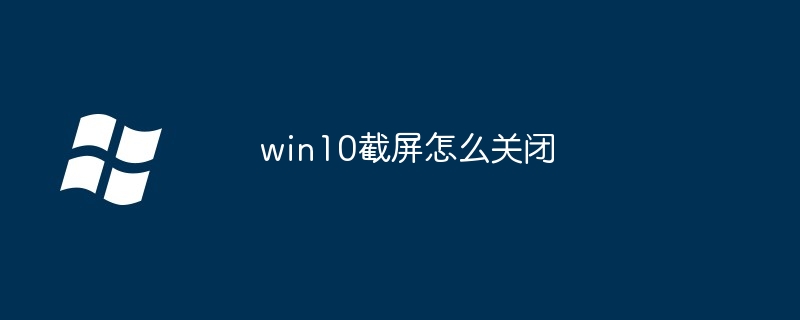
How to turn off the screenshot function in Windows 10: Edit the registry and change the "ScreenshotIndex" value to "0". Through the Group Policy Editor, enable the "Disable Print Screen" policy. Create a .bat file and run the following command: REG ADD "HKCU\Software\Microsoft\Windows\CurrentVersion\Explorer" /v ScreenshotIndex /t REG_DWORD /d 0 /f

How to turn off the screenshot function in Windows 10?
Windows 10 offers a quick and easy way to take screenshots, but sometimes you might want to turn it off. Here's how to turn off this feature:
1. Edit the registry
2. Through the Group Policy Editor
3. Use the shortcut
<code>REG ADD "HKCU\Software\Microsoft\Windows\CurrentVersion\Explorer" /v ScreenshotIndex /t REG_DWORD /d 0 /f</code>
Note:
The above is the detailed content of How to turn off screenshots in win10. For more information, please follow other related articles on the PHP Chinese website!
 win10 bluetooth switch is missing
win10 bluetooth switch is missing
 Why do all the icons in the lower right corner of win10 show up?
Why do all the icons in the lower right corner of win10 show up?
 The difference between win10 sleep and hibernation
The difference between win10 sleep and hibernation
 Win10 pauses updates
Win10 pauses updates
 What to do if the Bluetooth switch is missing in Windows 10
What to do if the Bluetooth switch is missing in Windows 10
 win10 connect to shared printer
win10 connect to shared printer
 Clean up junk in win10
Clean up junk in win10
 How to share printer in win10
How to share printer in win10




